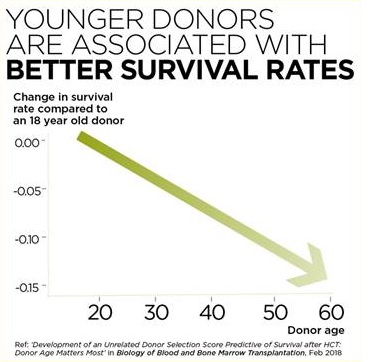New research demonstrates donor age strongly influences survival after stem cell transplant

International teams analyzed a range of donor characteristics but determined that the younger the donor, the higher the chance for patient survival.
In an international study led by the Centre for International Blood and Bone Marrow Transplant Research (CIBMTR; WI, USA), scientists have found that younger stem cell donors offer patients the greatest chance of survival. Previous studies suggested that donor characteristics including sex, ethnicity, blood type and previous pregnancies could all affect patient survival, making it difficult for transplant clinicians to rank donors where a patient has multiple HLA-matched donors.

In the research, analysis was conducted on more than 10,000 unrelated donor stem cell transplants which took place between 1999 and 2014, where the donor and patient were HLA-matched. Surprisingly, they discovered that the only donor factor which could be reliably associated with patient survival in this cohort was age; the younger the donor, the more likely the patient was to survive. Building on previous studies, the relationship between donor age and patient survival was shown to be linear.
One factor that could contribute to this trend is that blood stem cells from older donors are more prone to inflammation, produce more myeloid cells and fewer lymphocytes, and are more likely to be affected by clonal hematopoiesis, a mutation of blood cells that can increase the risk of blood cancer and overall mortality. Moreover, there is some evidence that Graft versus Host Disease is more likely where a patient has an older donor, as their cells are more experienced in identifying foreign cells.
Professor Steven Marsh, Director of Bioinformatics, Anthony Nolan Research Institute (London, UK) and co-author of the paper, commented: “These results are extremely significant for transplant clinicians who have patients with multiple HLA matches. We hope this will help clinicians feel more confident when selecting donors for their patients.
Professor Bronwen Shaw, Scientific Director of CIBMTR and lead author of the paper, explained: “This study allows clinicians to prioritize younger donors to maximize the chances of patient survival. While we know that other donor characteristics can influence the risk of the patient developing Graft versus Host disease or other complications, more research is needed to determine how important different donor factors are on outcomes other than patient survival.”
Source: Anthony Nolan press release